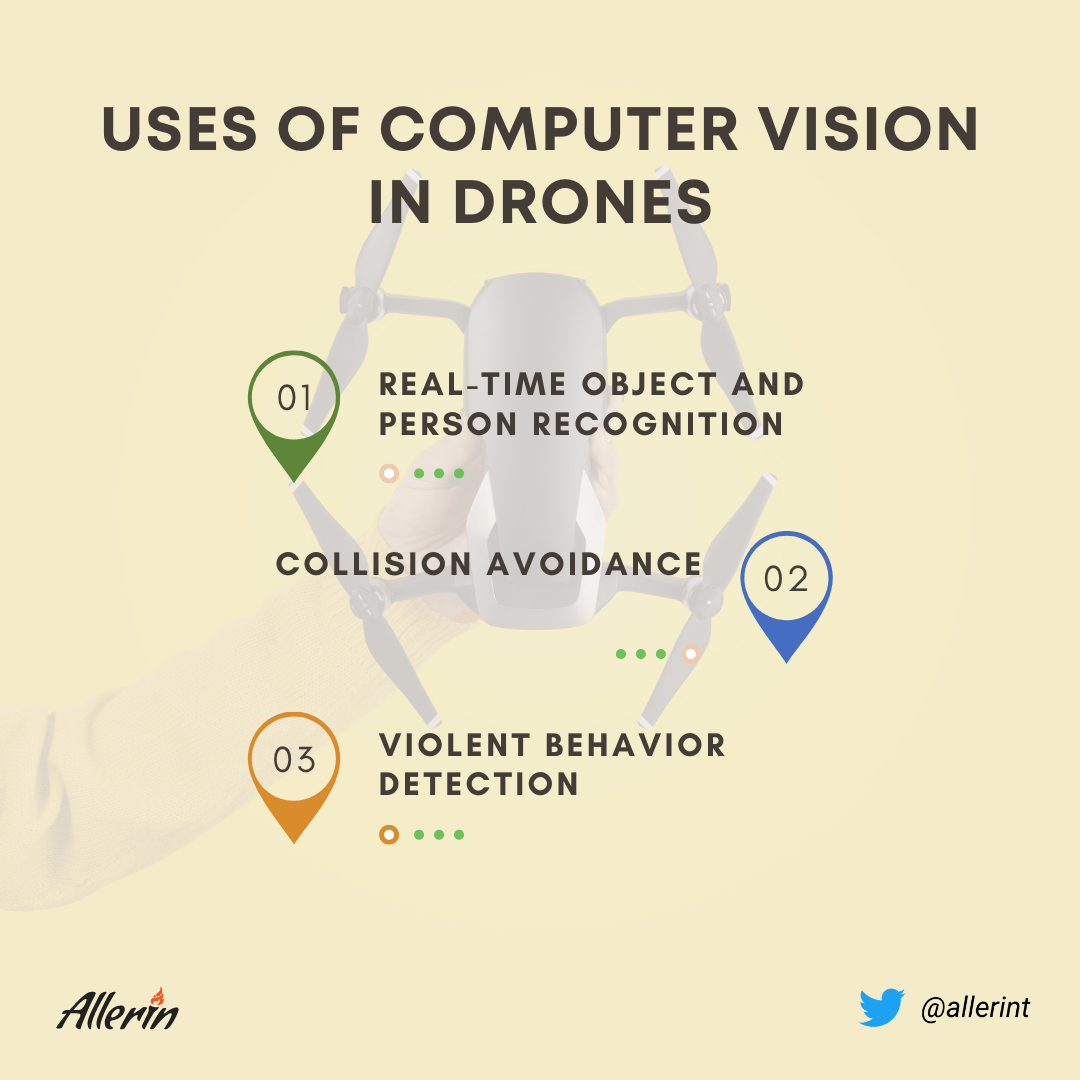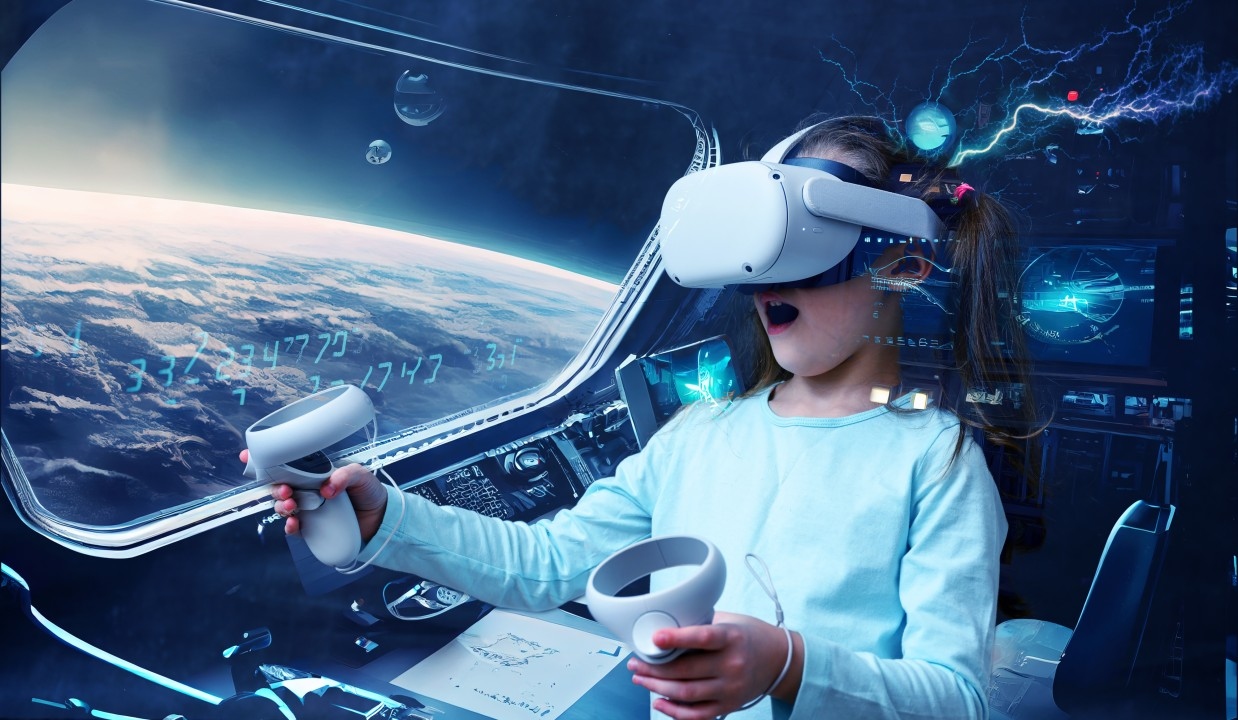
3 Ways Computer Vision Is Used in Drone Technology
There are multiple applications of computer vision in drones.
These use cases enable businesses to employ drones for several purposes.
Over the last few years, drones have become increasingly popular in various sectors, such as retail delivery, videography, real estate photography and carrying out land surveys. As per a study, the commercial drone market is projected to grow even further in the next few years. As a result, the number of application areas of drones will only increase in the future. Computer vision is an inextricable part of drones, also known as Unmanned Aerial Vehicles (UAVs). Here are some vital use cases of computer vision in drones that allow businesses to use UAVs for a wide array of applications:

1. Real-Time Object and Person Recognition
Businesses can employ drones for person recognition, resulting in greater assuredness in security. This computer vision application automates and simplifies security profiling and scanning individuals when they enter a confidential facility. In this way, drones can assist the security personnel in large organizations in which several people enter or leave the facility at any given time. The application of computer vision-driven person recognition can also be useful for crowd management in smart cities. Object recognition, on the other hand, allows smart city administrators or businesses to monitor vehicles. As a result, traffic monitoring is simplified through computer vision in drone systems.
Both object and person recognition have applications in law enforcement. It enables police agencies to track down stolen cars—even when they’re in deserted locations where security cameras are not present—and wanted criminals on the run. Generally, the CCTV cameras present in smart cities can carry out object and person recognition for this purpose.
2. Collision Avoidance
While they aerially traverse a given zone, UAVs are vulnerable to clashes with birds, cables, high-rise buildings or other drones. As one can expect, such clashes can cause serious damage to drones and negatively impact their functionality. The dynamic object recognition function in drones enables them to monitor objects that are quickly approaching them or if they’re about to collide with a static object. In such situations, drones can autonomously change their direction or altitude to evade a collision. Computer vision is the main driver behind this detection and response mechanism in UAVs.
3. Violent Behavior Detection
AI and computer vision in drones can automate safety surveillance in smart cities by streamlining real-time analysis of captured video footage. A team of researchers in the UK and India has collaboratively developed a quadcopter that can capture and transmit video footage for law enforcement-based surveillance. Such systems can be configured to carry out behavioral analysis of crowds in smart cities. Machine learning algorithms can predict violent behavior in individuals or groups in smart city zones. On detecting such behavior, drones can direct law enforcement authorities nearby to send units there and bring the situation under control. As with any type of surveillance, businesses and governments need to make sure that they utilize drones in a way that there are no privacy violations.
Now, you may think that smart cities already contain several CCTV cameras and sensors to capture visual data. Why would the use of drones be necessary? For starters, drones are mobile and can stealthily invade zones in which static cameras cannot enter. Additionally, drones can traverse areas in which network coverage is low or wiring infrastructure is inadequate. Therefore, drones offer a greater number of solutions to smart city authorities and businesses. As stated earlier, computer vision forms the backbone of all drone operations. So, it is safe to assume that the use cases of computer vision in drones will grow further in the foreseeable future.
Trending
-
1 How Does SaaS Differ From IaaS And PaaS?
Fabrice Beaux -
2 Single Page Applications vs Multi-Page Applications
Fabrice Beaux -
3 Top 7 Effective Strategies for Multi-Language Website Development
Fabrice Beaux -
4 Boost Engagement to Infinity and Beyond: Unleashing AI-Driven Support
Anas Bouargane -
5 The Cheapest And Most Beautiful Stickers in CS2
Daniel Hall





Comments